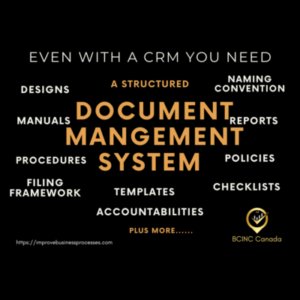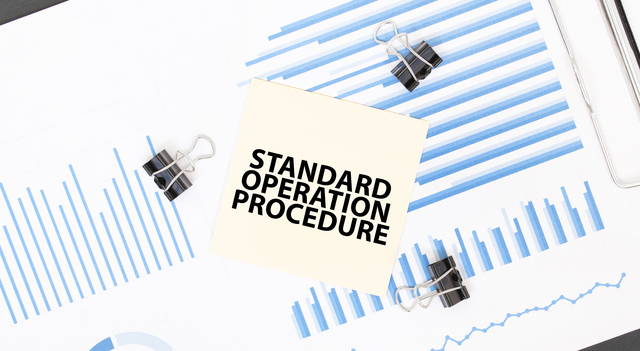How to create a standard operating procedure that works is key to efficiency in business. Yet, without clear guidelines and protocols, chaos can easily ensue especially if you prefer to operate a business where these guidelines are in the heads of the business owner and one or two longer serving employees.
This is where we see the value of the SOP Standard Operating Procedure , the “director of organizational efficiency!” Crafting an SOP that truly works is not merely about documenting processes; it is about setting a framework for clarity, consistency, and effectiveness.
The Case for Standard Operating Procedures
It is always a matter of amazement to find that certain critical processes and procedures reside “in the head of the business owner” and one or two other trusted employees, if any at all!
Some business owners even believe that some procedures are their intellectual property and can be stolen by unscrupulous employees.
While it is understandable that the business owner never felt the need, or did they have time to document procedures in the initial stages of the business, growth makes this more complicated.
Without these SOPs, the business can quickly descend into chaotic operations.
How to Write Standard Operating Procedures – Where to Start

In this era of constant flux, businesses face the challenge of maintaining stability amidst change. A well-designed SOP serves as a beacon, guiding teams through routine tasks and unexpected challenges alike.
But knowing how to create SOP’s that truly resonate with your team and your business objectives requires more than just drafting a document. It demands insight into workflows, collaboration across departments, and an unwavering commitment to continuous improvement.
This means that you cannot just sit in a corner and create standard operating procedures for your business. You will require input from employees who execute the procedure across the business.
This article looks at the science of crafting SOPs that transcend mere paperwork, offering practical strategies, real-world examples, and expert insights to empower you in constructing SOPs that not only work but thrive in today’s dynamic business landscape.
How to Create SOP’s – Step-By-Step
Creating effective Standard Operating Procedures (SOPs) is both an art and a science, requiring meticulous attention to detail and a deep understanding of your organization’s processes. Here’s a step-by-step guide to crafting SOPs that truly work:
Identify Processes
Identifying processes is the foundational step in creating effective Standard Operating Procedures (SOPs). Begin by conducting a thorough analysis of your organization’s workflows and operations and map out the key processes.

What tasks are performed regularly? Identify key tasks, recurring activities, and critical dependencies. Engage with frontline employees, department heads, and other stakeholders to gain insights into day-to-day operations.
Use tools such as process mapping, flowcharts, and workflow diagrams to visually represent these processes. This detailed understanding will serve as the blueprint for drafting comprehensive and relevant SOPs that address the specific needs and challenges of your business.
Engage Stakeholders
Collaboration is key, and engaging stakeholders is essential in the SOP development process that will align with the realities of your business.
Involve frontline employees, department heads, and subject matter experts. Their insights and expertise are invaluable in ensuring that the procedures are practical and effective. Conduct interviews, focus groups, or workshops to gather insights into their experiences, challenges, and best practices.
By actively involving stakeholders, you ensure that the SOPs reflect the diverse perspectives and expertise within your organization. This collaborative approach fosters ownership, buy-in, and commitment to the SOPs, ultimately leading to their successful implementation and effectiveness in streamlining operations.
Remove Ambiguity in Writing the Document
Write the SOPs in clear, concise language, avoiding jargon or ambiguity. Use a standardized format that includes a title, purpose, scope, responsibilities, step-by-step procedures, and references.
Include Visual Aids

Visual aids such as flowcharts, diagrams, and screenshots can enhance comprehension and retention. Incorporate these wherever possible to illustrate complex processes or decision points.
Review and Refine
SOPs should be living documents that evolve with your organization. Regularly review and update them to reflect changes in technology, regulations, or best practices.
By following these steps, you can create SOPs that not only streamline operations but also empower your team to perform at their best.
Create Standard Operating Procedures Templates – 9 Essential Features
A well-designed Standard Operating Procedure (SOP) template is a helpful resource in any business. It should include essential features to ensure clarity, consistency, and effectiveness. Here are the key elements:
Title: Clearly state the name of the SOP, providing a brief overview of the process it covers.
Purpose: Define the objective or goal of the SOP. Why is this procedure important? What problem does it solve?
Scope: Specify the boundaries of the procedure, outlining what is included and excluded from its coverage.
Responsibilities: Clearly define the roles and responsibilities of individuals or teams involved in executing the procedure. This ensures accountability and prevents confusion.
Procedure: Present the step-by-step instructions for carrying out the process. Use clear and concise language, breaking down complex tasks into manageable steps.
References: Include any relevant documents, forms, or resources that support the execution of the procedure. This may include links to software applications, regulatory guidelines, or training materials.
Revision History: Document any changes or updates made to the SOP over time. This helps track its evolution and ensures that users are referencing the most current version.

Approval: Indicate the names and signatures of individuals who have reviewed and approved the SOP. This ensures that the procedure has undergone proper validation and endorsement.
Date of Creation/Revision: Include the date when the SOP was initially created and any subsequent revisions. This provides context for users regarding how current the document is.
Conclusion – Write Standard Operating Procedure
Understanding how to create a standard operating procedure and templates is not as difficult as it first seems. By incorporating these essential features into your SOP template, you can create a standardized format that facilitates clarity, consistency, and compliance across your entire business.
But in many cases, understanding is not the main issue, but the time needed to get these procedures written without disrupting day-to-day activities. We can assist you to get standard operating procedures developed for your business in an efficient and timely manner. CONTACT US TODAY to discuss HOW.
Related Articles
- Document Management Framework – How to Develop
- Small Business Document Management System – How to Begin Set Up
- Simple Document Management System – How a Consultant Helps
References
Hayton, E (2022) Why are SOPs Important? https://scribehow.com/library/why-are-sops-important

